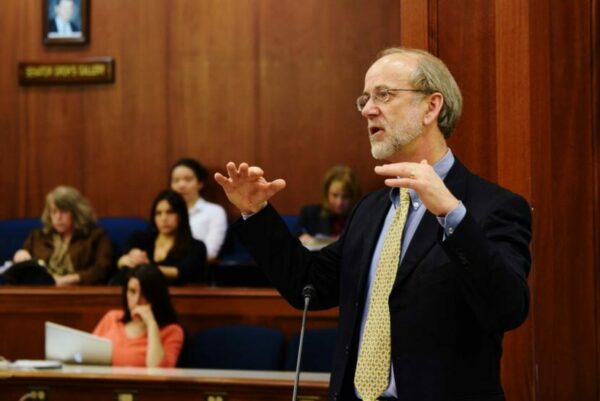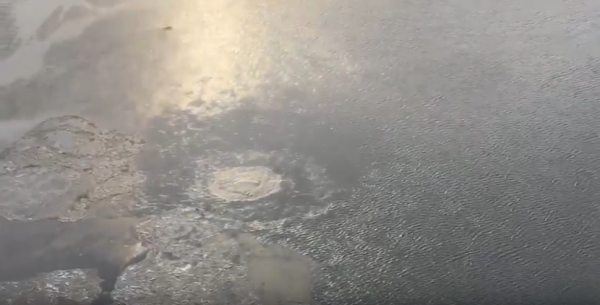
State regulators doubled down Thursday on their refusal to investigate a 2016 fuel gas leak in Cook Inlet, capping a years-long disagreement with a former commissioner over the scope of the agency’s authority.
The Alaska Oil and Gas Conservation Commission is charged with protecting the environment and preventing waste in the oil industry. And the kerfuffle over the 2016 leak hinges on one of those words: waste.
The state commission said the Hilcorp leak didn’t count as waste because the gas from Nikiski to a platform that escaped was on the other side of the meter from where it was produced, meaning it belonged to Hilcorp and was no longer up to the state to regulate.
But former commissioner Hollis French has taken a different view.
French, who also served as a Democratic state senator from Anchorage, was on the commission at the time of the leak. And after Gov. Mike Dunleavy fired him from the agency in 2019, he petitioned commissioners to take a deeper look into the matter.
“Gas shot up into the air for several months. That gas was wasted,” he said. “What happened because the gas was wasted? The oil platforms shut down. And oil production was lost.”
The commission refused and French sued. The Supreme Court of Alaska sided with him, saying the commission needed evidence to back up its decision to not investigate.
But the commission remains unmoved. It said it will not investigate or fine Hilcorp for the leak. In a decision published Thursday, commissioners took the same stance as they did in 2019. In a three-page order, they said the state regulators are concerned an expanded definition of a leak would open up Pandora’s box.
“To expand its authority, as suggested by French, would mean that the AOGCC would be extending its authority over cases like the Exxon Valdez tanker spill, a rupture in an Enstar Natural Gas Company’s gas line that serves its residential or business customers, and even private consumers who are wasteful with the oil or gas they purchase,” the commission wrote.
A spokesperson for the commission declined further comment.

French said he’s not surprised. But he finds the decision lazy. Waste is waste, he said, no matter where it occurs — near the source or during distribution.
“The meter is not the point,” French said. “Getting the gas and oil to the meter is exactly half the job. The other half is delivering it to some person who wants to make good use of it.”
French could appeal the decision with the commission or in court. He said he’s still pondering his options.
Hilcorp’s pipeline was first installed in 1965 and carried fuel gas made up mostly of methane. Investigators said that a rock on the ocean floor caused the 2016 leak.
The ruptured Hilcorp line released an estimated 210,000 to 310,000 cubic feet of gas each day, enough to power more than 1,000 homes for a day. It leaked for three months between 2016 and 2017 before Hilcorp patched it, citing danger from sea ice.
The line has a history of leaks dating back to 2014. Its most recent reported leak was last spring. Following that leak, federal regulators ordered Hilcorp to replace the gas line.
[Sign up for Alaska Public Media’s daily newsletter to get our top stories delivered to your inbox.]




